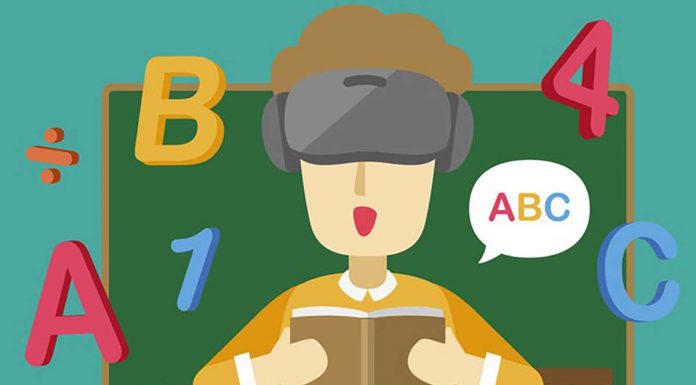Today, despite different innovative trends in educational process most of the ‘innovative' guidebooks don't have visual improvements or interactive features, which leads to boredom of students. Furthermore, if the teacher cannot present a material in an interesting, unusual way, it is difficult for students to immerse themselves in the learning process: they don't perceive the information or don't want to learn at all. Various technological trends come to the aid of students today – VR, AI, gamification. The Pro-Papers experts have analyzed future trends in the educational process and tried to determine their growth area.
If you combine all the educational technological trends, it turns out that schools of the future will turn into a place where the child will be pulled out of the house in the mornings like a magnet. A robot teacher explains mathematics, textbooks based on artificial intelligence adapt their content to a student so that he/she is always interested.
“One of the most fascinating themes is robotization,” asserts Linda Atkin, the Pro-Papers expert. “Some experts predict that AI (an artificial intelligence) will become the future of education. They provide compelling arguments. The AI underlies textbooks, which analyze students' emotions, and dynamically adapt their content to keep them interested,” says Linda.
According to her, the same AI draws conclusions from the lessons on the Third Space Learning platform and gives teachers advice on how to improve them. But here it is important to understand what the AI is.
The modern AI is not Skynet, but big data analysis algorithms. It is the so-called “black box” which is hidden inside any IT system. These algorithms are able to collect information, process it, build forecasts and give advices. They even have interfaces for communication with people. They know how to ‘think', but do it differently, not like as a person. Such AI cannot yet replace teachers and not all experts believe that it should ever be done.
The robot does not have feelings, emotional and intellectual flexibility. And the human factor remains an important component of the educational process – each of us can remember our school teacher, who ‘infected' with love for the subject and helped to reveal our talents. So, for today, the best AI technologies cannot replace teachers yet, but help them.
The same strategy – to interest at any cost – is followed by creators of educational versions of popular games. For example, Microsoft's MinecraftEdu is already used in 10,000 schools in 45 countries around the world, including the UK, despite the fact that British politicians have spoken against this game. They believe that this shifts the attention of children in the wrong direction and in fact will not help, but only interfere their learning.
Virtual reality technologies (VR technologies) are able to radically change the perception of learning. In China, a study was conducted, according to which VR significantly improves school test results and student performance. When a class, studying the structure of ancient plants in a biology class, moves to a clearing full of dinosaurs, the most disinterested children are involved in the general educational process.
Researchers believe that virtual reality opens up an infinite number of educational scenarios – and, perhaps, will be able to qualitatively change modern education. This initiative is supported by Google, which promised to provide access to VR-technology to a million students.
The use of VR technology in learning allows to:
- Make learning materials understandable and interesting for students;
- Achieve complete immersion in the learning process through 3D-visualization and gamification elements;
- Give a student a direct, not theoretical, experience;
- Reduce the influence of distractions that impede the perception of information;
- Explain difficult to understand phenomena and objects.
Of course, much depends on the characteristics of perception: it is more familiar and easier for someone to perceive the text from print media. However, for those who more easily perceive the media format, VR technologies can make the learning process really exciting. For example, looking out the window, students would see countries and events that the teacher tells about: the history of the USA, the formation of volcanoes, the migration of waterfowl.
How does VR work?
VR technologies create a virtual space that immerses students in the world of a topic, helping to concentrate on studying it. Studying a chemical equation in a classroom equipped with VR technology, students get inside a chemical reaction, observing the combination of particles.
For example, today, thanks to the capabilities of VR, American students make regular bus trips to Mars – VR technologies transform the urban landscape outside the window into a Martian.
In the near future, more than 100 schools in the United States will be equipped with similar VR screens: you can walk around the Sahara, descend into the Mariana Trench or climb Everest without leaving the classroom.
Scientists around the world support the use of VR-technology for learning as contributing to the understanding and memorization of the material. It's easier to master any skills if you train in an interactive, three-dimensional environment.
Where are VR technologies used?
It is also necessary to expand the areas of VR application. Today VR technologies are applied:
In classical school or university education: does not replace the classic format, but complements the lesson five-minute VR-simulation, explaining its content;
With distance learning: being in different cities, avatars of teachers and students can meet in a virtual classroom, simulating a full-fledged educational process in real time;
For self-study: using special glasses and downloading the course in the App Store or Google Play, you can, for example, find yourself in Paris and learn French, and then pass the test of knowledge. For example, the educational company Unimersiv created the program House of Languages.
By downloading it to your smartphone, you get the opportunity to learn foreign languages by visiting virtual museums, airports, cafes where native speakers are waiting for you, as well as inscriptions, brochures, magazines and menus in the language being studied.











